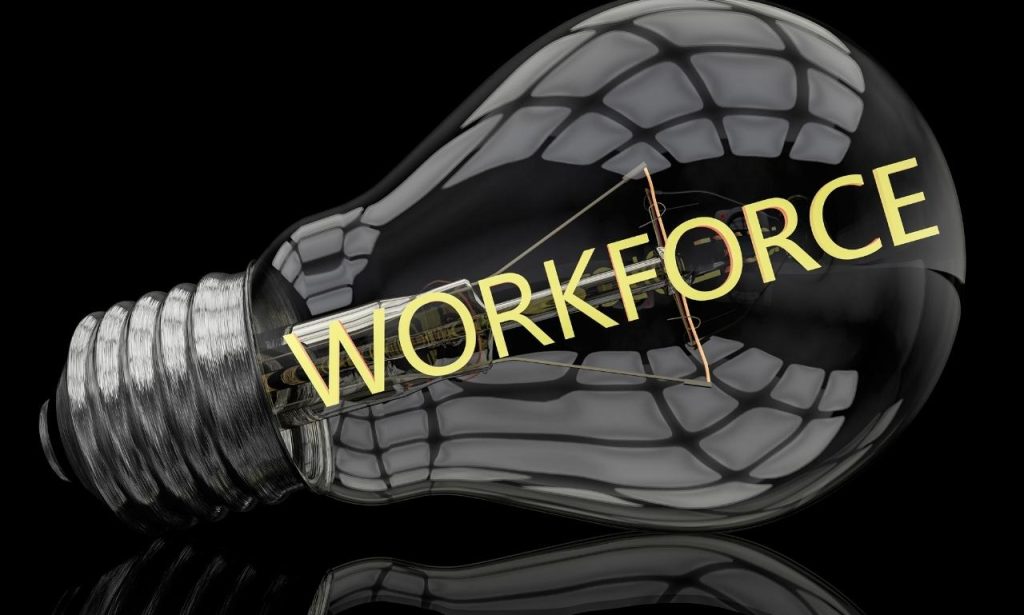The way we work has changed. Offices are no longer the only place where business happens. Today, many companies run with teams scattered across cities, countries, and continents. This model is known as the distributed workforce. And it’s not just a passing phase—it’s quickly becoming the standard.
But what does it really mean to operate with a distributed workforce? What are the perks? What challenges do companies face? And most importantly, is it here to stay?
What is a Distributed Workforce?

A distributed workforce is a team that operates from various physical locations instead of one central office. Some employees may work from home, others from coworking spaces, while a few might still show up at a company HQ. But no single office hosts the entire team.
Unlike remote-only setups, this model blends flexibility with structure. It can include a hybrid model where staff split time between home and the office. Or it might be fully decentralized, with no physical office at all.
The key element is location independence. Employees can work where they are most productive—whether in Nairobi, New York, or New Delhi. Tools like video conferencing, project management apps, and cloud platforms keep them connected.
What Are Distributed Ways of Working?
This phrase covers more than just where people sit. It refers to how work is done across locations, time zones, and cultures.
Distributed ways of working rely heavily on digital infrastructure. Cloud storage, communication platforms, and secure networks make it all possible. Clear workflows, standardized tools, and shared calendars help teams stay in sync.
There’s also a cultural side. Leaders must build trust, promote autonomy, and set clear goals. Collaboration happens through Slack messages or Zoom calls, not watercooler chats. Team-building might include virtual game nights or weekly syncs. These routines keep everyone aligned—even miles apart.
The Rise of Remote Work
The rise of distributed teams didn’t start with the pandemic—but COVID-19 pushed it into overdrive.
Before 2020, only a fraction of companies embraced remote work. Many feared it would tank productivity or weaken team bonds. But lockdowns forced a global work-from-home experiment—and it worked.
Suddenly, businesses realized they could still meet deadlines, close deals, and grow—all without a physical office. This shift cracked open the door to permanent distributed models. Big names like Twitter and Shopify embraced it. Startups followed. And workers began to demand it.
The Freedom Factor
One of the biggest appeals of distributed work? Freedom.
Employees can structure their day around their life, not the other way around. No long commutes, dress codes, and rigid 9-to-5.
Want to walk your dog during lunch? Go for it. Prefer starting work at 7 a.m.? That’s fine—as long as the job gets done.
This autonomy boosts morale and job satisfaction. People feel trusted. And that trust often leads to better work and higher retention rates.
Empowering Productivity
It might seem counterintuitive, but remote teams often outperform traditional ones.
Why? Because productivity isn’t about being seen—it’s about getting things done.
In distributed models, output takes center stage. Key performance indicators (KPIs), deadlines, and deliverables guide performance. There’s less micromanagement and more ownership.
Cloud tools help streamline workflows. Microsoft 365, Slack, Asana, and Zoom are just a few that keep distributed teams on track. With fewer office distractions, many employees hit deep focus more often. That leads to quality results.
The Challenges of Remote Work
It’s not all sunshine and flexible hours. Distributed work also brings real challenges.
Time zones can make scheduling a nightmare. A 9 a.m. meeting for one person might mean midnight for another. Teams must plan carefully.
Security becomes a top priority. With people working across networks and devices, businesses need robust security measures. That means multi-factor authentication, endpoint security, and regular audits.
Communication is another pain point. Without face-to-face chats, things can get lost in translation. Misunderstandings, missed messages, and delayed replies are common.
Loneliness is real too. Some remote workers miss the energy of an office. Team leaders must find ways to build connection. Think virtual coffee breaks, town halls, or feedback loops.
The Future of Work
So where do we go from here?
The future of work won’t look like the past. Offices will still exist, but they’ll serve a new role. Instead of daily routines, they’ll become hubs for collaboration, events, or strategy sessions.
The hybrid model will likely dominate. People want flexibility, but some in-person interaction too. Companies that offer both will attract top talent.
Advances in cloud computing, cybersecurity, and communication tech will keep making distributed work smoother. Faster internet, smarter software, and secure infrastructure will power the shift.
Is the Distributed Workforce Model Going to Stay?
Yes, and here’s why: the benefits outweigh the hurdles.
Workers want it. Companies see results. Technology supports it. And global trends show no signs of reversing course.
According to studies, employees now rank flexibility among their top priorities—sometimes even above pay. For businesses, distributed teams mean access to diverse talent, leaner costs, and resilient operations.
We’re not going back to cubicle farms. The distributed workforce is here for the long haul.
What Are the Benefits of a Distributed Workforce?
Let’s break down the top reasons why companies are embracing this model.
Access to Global Talent Pool
Hiring used to mean searching within commuting distance. That’s not the case anymore.
With a distributed model, companies can recruit the best people—regardless of location. Want a software engineer in Berlin? Or a marketing strategist in Johannesburg? No problem.
This global reach increases diversity, creativity, and skill sets across the team.
Cost Savings
Running an office is expensive. Rent, utilities, office supplies—it all adds up.
Distributed teams drastically cut these costs. Some companies eliminate office space altogether. Others downsize or move to coworking models.
Even employees save money. No commuting, fewer lunches out, and less need for business attire mean more money in their pockets.
Enhanced Productivity
With fewer meetings, less micromanagement, and flexible schedules, people get more done.
Tools like automated reporting, content management systems, and cloud platforms reduce manual work. Employees spend more time focused and less time in traffic.
Teams work smarter—not harder.
Work-Life Balance
A healthy work-life balance is no longer a luxury. It’s expected.
Distributed work makes it easier to juggle personal commitments with professional ones. Parents can attend school events. Fitness routines become part of the day. Mental health improves with more control over time.
This leads to happier, more loyal employees.
Geographical Flexibility
Need to move to another city? No problem.
Distributed work frees employees from being tied to a single location. People can live closer to family or in more affordable places. Companies retain talent during life transitions—without sacrificing productivity.
It’s a win-win.
24/7 Operations
Having teams across time zones is a strategic advantage.
Customer support doesn’t stop at 5 p.m. Development work continues overnight. Projects move faster because someone is always online. Hand-offs between regions ensure round-the-clock progress.
This continuous flow keeps businesses agile and competitive.
Conclusion
The distributed workforce isn’t a passing trend—it’s a smarter, stronger, and more human way to work.
Companies that embrace it are better prepared for disruption, more appealing to top talent, and built for long-term success. But it takes intention. You need clear communication channels, secure infrastructure, and a culture that supports flexibility.
Remote work isn’t just a reaction to the past. It’s a blueprint for the future.
The real question isn’t if you should adapt—but how fast can you get there?
Also Read: Biggest Challenges Nonprofit Clinics Face After COVID
FAQs
A team that operates from multiple locations, often remotely, instead of one central office.
Remote work is a type of distributed work. Distributed teams may combine remote, hybrid, and in-office setups.
Cloud platforms, communication apps like Slack, and project management tools such as Asana or Trello.
No. With clear goals and the right tools, distributed teams often outperform traditional ones.


